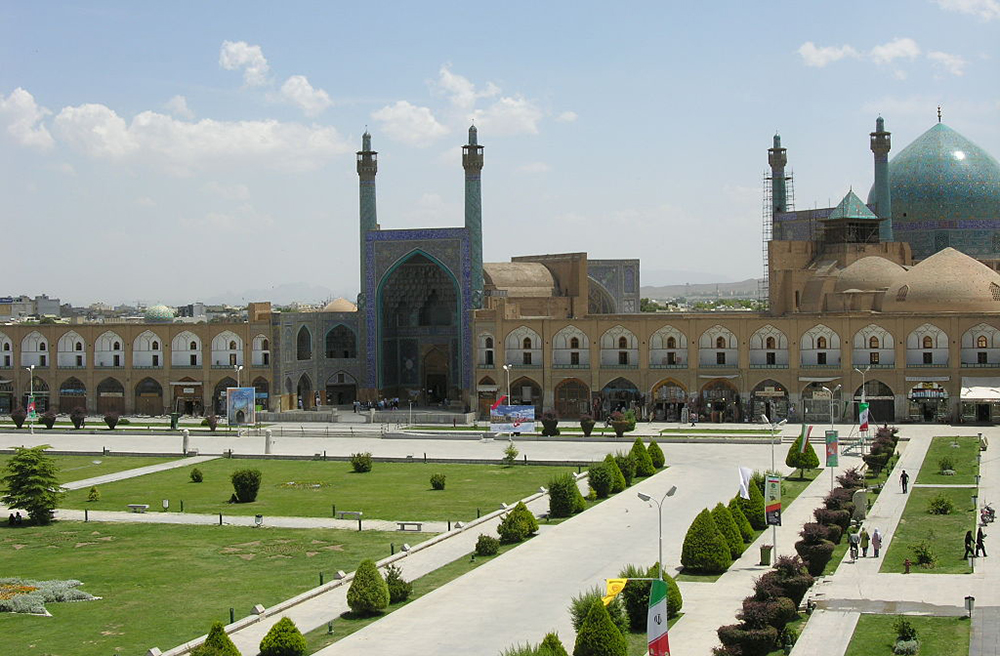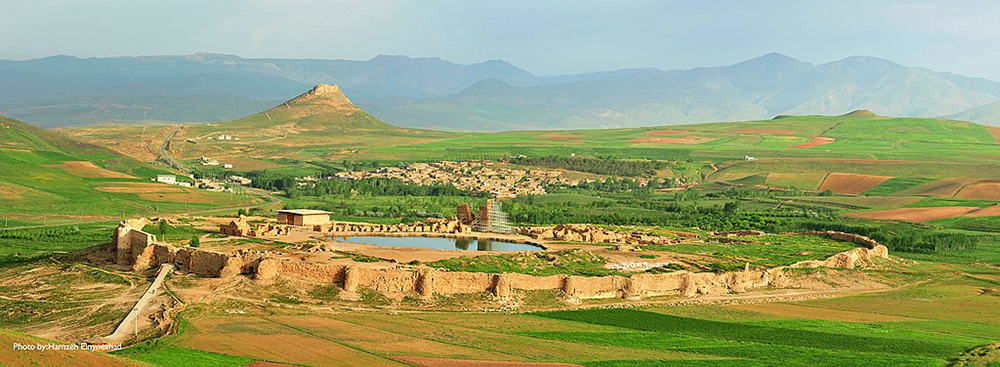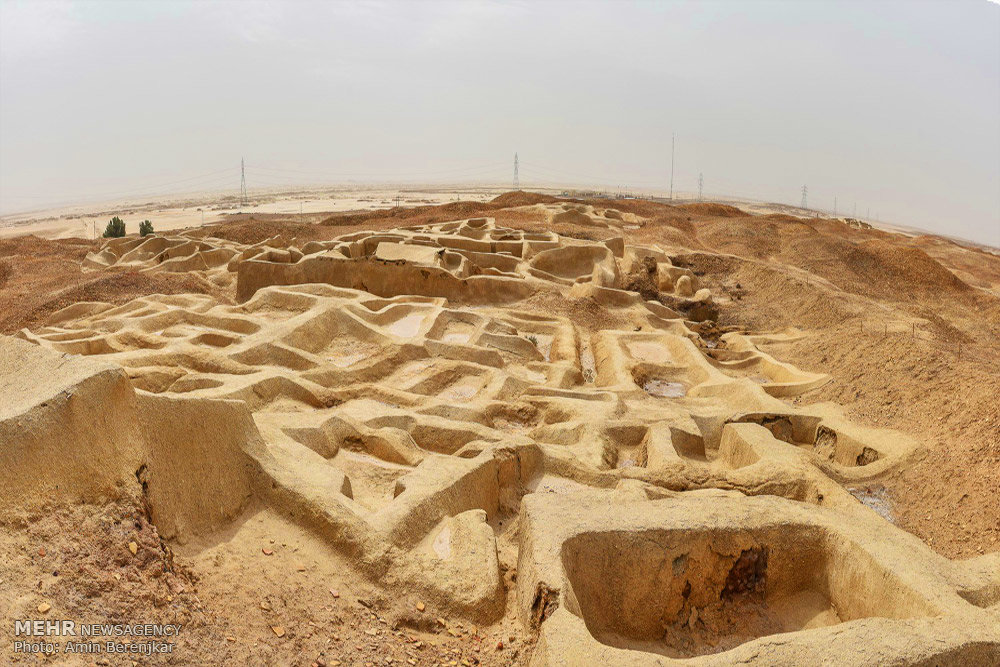Iran’s 24 World Heritage Sites Are Safe. Learn More about Five of Them.
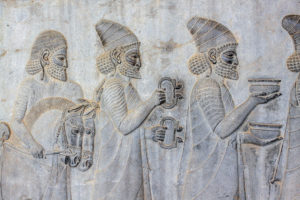 Persepolis (Photo by Mostafa Meraji on Unsplash)
Persepolis (Photo by Mostafa Meraji on Unsplash) The past few days may be remembered by historians and Americans in general as the most turbulent period of Donald Trump’s presidency. Facing an impending impeachment trial in the Senate—the process of which Democrats continue to demand be free and fair—the president struggled to contain the tremendous diplomatic fallout and unintended consequences of his authorization of a drone strike that killed Qassim Soleimani, the head of Iran’s elite Quds military force and one of the most powerful figures in the Islamic Republic, at an airport in Baghdad, Iraq, on January 3.
The airstrike escalated the long-brewing tension between Iran and the United States—bringing the two nations to the brink of a hot war as Iran retaliated Tuesday by launching twenty-two ballistic missiles at two US military bases in Iraq. Although President Trump had threatened to target Iranian cultural sites were the country to retaliate, his response in yesterday’s national address was, thankfully, more tempered. As his allies and adversaries alike have pointed out, attacking those sites would not only be barbaric, it would likely constitute a war crime per the 1954 Hague Convention and resolution 2347 of the United Nations Educational, Scientific, and Cultural Organization (UNESCO)—both of which the US ratified.
In an address before the UN Security Council on March 24, 2017, UNESCO Director-General Irina Bokova warned that
The deliberate destruction of heritage is a war crime, it has become a tactic of war to tear the fabric of societies over the long term, in a strategy of cultural cleansing. This is why defending cultural heritage is more than a cultural issue, it is a security imperative, inseparable from that of defending human lives.
To gain perspective on their cultural value to Iranians as well as their universal relevance to the rest of humanity, here we highlight five of the most notable among two dozen UNESCO World Heritage Sites in Iran that (let’s strongly hope) the president has firmly decided not to destroy.
1. Persepolis
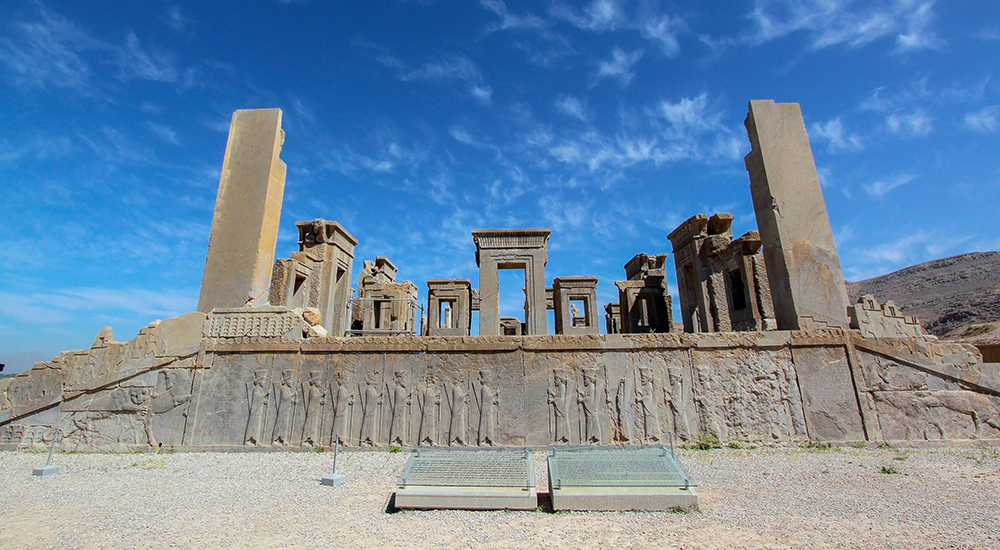
Photo by mostafa meraji on Unsplash
According to UNESCO, “Persepolis was the capital of the Achaemenid Empire. It was built on an immense half-artificial, half-natural terrace, where the king of kings created an impressive palace complex inspired by Mesopotamian models.” The unique complex was founded by Darius I in 518 BCE in what is now known as southwestern Iran, and is “among the world’s greatest archaeological sites.”
2. Tchogha Zanbil
Located in Khuzestan province, southwest Iran, the site was founded c. 1250 BCE. As described in the World Heritage Site listing, “The principal element of this complex is an enormous ziggurat [a rectangular stepped temple tower] dedicated to the Elamite divinities Inshushinak and Napirisha. It is the largest ziggurat outside of Mesopotamia and the best preserved of this type of stepped pyramidal monument.” The site covers “a vast, arid plateau overlooking the rich valley of the river Ab-e Diz and its forests. A ‘sacred city’ for the king’s residence, it was never completed and only a few priests lived there until it was destroyed by the Assyrian king Ashurbanipal about 640 BCE.”
3. Meidan Emam, Esfahan
According to its World Heritage listing, the Meidan Emam, Esfahan was built by Shah Abbas I the Great at the beginning of the seventeenth century. “Bordered on all sides by monumental buildings linked by a series of two-storied arcades, the site is known for the Royal Mosque, the Mosque of Sheykh Lotfollah, the magnificent Portico of Qaysariyyeh, and the fifteenth-century Timurid palace.” They are, by all accounts, “an impressive testimony to the level of social and cultural life in Persia during the Safavid era.”
4. Takht-e Soleyman
Located in northwest Iran, the archaeological site is positioned in a valley set in a volcanic mountain region. According to UNESCO, “The site includes the principal Zoroastrian sanctuary partly rebuilt in the Ilkhanid (Mongol) period (thirteenth century) as well as a temple of the Sasanian period (sixth and seventh centuries) dedicated to Anahita. The site has important symbolic significance. The designs of the fire temple, the palace, and the general layout have strongly influenced the development of Islamic architecture.”
5. Shahr-i Sokhta
The name means “Burnt City,” the remnants of which are located at the junction of Bronze Age trade routes crossing the Iranian plateau. As UNESCO details, “The remains of the mudbrick city represent the emergence of the first complex societies in eastern Iran. Founded around 3200 [BCE], it was populated during four main periods up to 1800 [BCE], during which time there developed several distinct areas within the city: those where monuments were built, and separate quarters for housing, burial and manufacture.”
Though some of these cultural sites are religious in nature, many are not, and the 1954 Hague Convention for the Protection of Cultural Property in the Event of Armed Conflict makes no distinction in its stipulation that parties at war must “take all possible steps to protect cultural property,” including “monuments of architecture, art, or history, whether religious or secular.” The president’s repulsive threat has made this mandate incumbent on all reasonably minded Americans, especially in this perilous time when he has descended so low to the rank of war criminals and terrorists who threaten, destroy, and pillage art and cultural monuments in the time of war, disregarding the grave importance of such cultural and natural heritage to the identity, dignity, and cultural survival of those they attack.


